People worldwide spend billions of dollars on Amazon every year. Amazon generates a combined annual revenue of about $700 billion from a monthly user base of about 310 million.

However, many people flocking to the Amazon site daily attract scammers, con artists, fraudsters, and hackers. The Federal Trade Commission (FTC) shows that there has been more than a 500% increase in reported Amazon scams in the last five years. To these unscrupulous scammers, many victims lose money, amounting to about 27 million.
Unfortunately, every Amazon buyer or seller is a potential target for these scammers. So, how exactly can you protect yourself, your family, and your friends? We have lined up a comprehensive post to guide you through the most common scams on Amazon that you need to know and how to shop safely on the site.
The 17 Latest Amazon Scams – Quick List
Here’s a quick overview of the most frequent Amazon scams today:
- Fake tech support: Imposters pretend to be Amazon tech guides to call or email you to obtain personal information and money and install malicious software onto your device.
- Unauthorized purchase: Scammers send an email or message claiming that you made unauthorized purchases on Amazon. Their messages aim to phish out your info.
- Amazon Prime scams: You receive a call or email warning you of issues with your Amazon Prime account membership accounts. They then use social engineering tricks to obtain money and personal data.
- External malicious links: A phishing tactic where fraudsters use malicious links through SMS or emails to get you to click them; the links and emails look similar to the official Amazon links.
- Amazon gift card scams: Scammers want you to buy Amazon gift cards to obtain their credit card info. Others steal payment information from PayPal or other cards before purchasing gift cards.
- Amazon Prime Video scam: Scammers have websites and emails that look like the official Amazon platforms to convince you to click malicious links to correct your Amazon Prime Video account.
- Payment scams: Con artists posing as legitimate Amazon sellers trick you into paying for the items you buy straight to their PayPal, MoneyGram, or other direct transfers.
- Failed product delivery and shipping: Scammers target legitimate sellers on Amazon by claiming refunds, pretending they did not receive the products they ordered.
- The Amazon mystery box: Cons advertise mystery boxes on social media that allegedly contain expensive items at cheap prices. You lose your money and bank details when you pay for your orders.
- Brushing scam: Scammers target legitimate Amazon sellers by promising positive reviews on product pages.
- Freebies and gifts scam: Fraudsters play on your lust for gifts and get you to click on malicious links that phish out your data and money.
- Fake job scams: Cybercriminals pose as Amazon recruiters intending to steal money and personal info from unsuspecting job seekers.
- Typosquatting scams: Con artists create fake websites and emails that look like a misspelled Amazon.com. The typos are designed to confuse you when entering your payment information or other account login details.
- Porch pirate scams: Some criminals will access your account, make orders from Amazon, and intercept the item before delivery.
- Fake invoice scams: Sometimes, you receive an invoice requiring you to pay for an item you never ordered. If you are outraged by the excessive overcharge, they will provide a link to correct it.
- Unclaimed package scams: Similar to the mystery box, scammers use the unclaimed package trick to get innocent people to send money or personal details to get inexistent unclaimed packages.
- Overpayment scams: You receive random emails saying that you made an overpayment for an item on Amazon.
How Amazon Scams Work
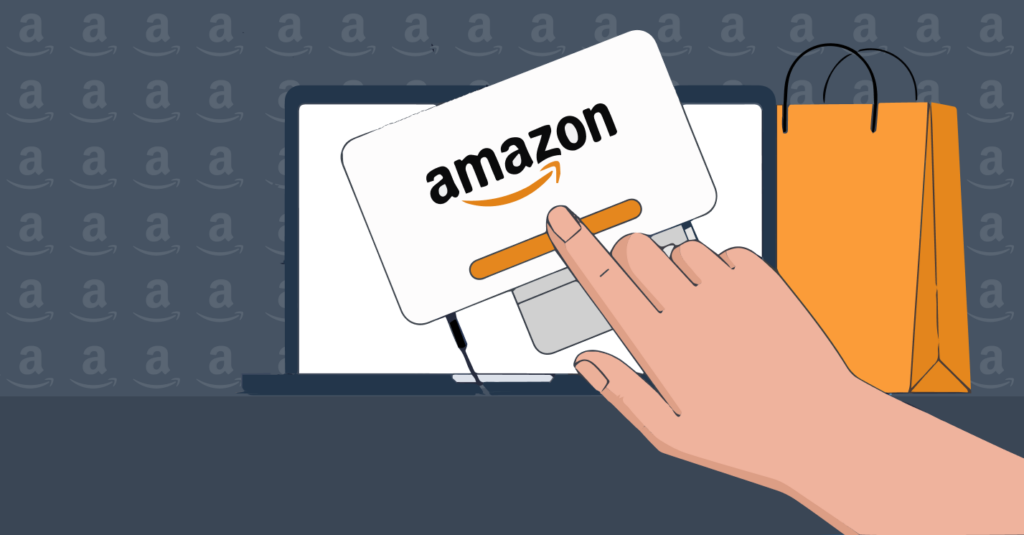
Millions of people visit Amazon’s website daily to buy their favorite items. Unfortunately, these innocent buyers don’t know they are the targets of a malicious network of scammers ready to steal their money and personal info. Recently, Amazon took the spot as the world’s most impersonated brand.
The scams typically work in two main ways:
- Scammers trick you with their fake offers that are too good to resist. Once you buy the cheap products the fraudsters offer, they steal your credit card data.
- The fraudsters pretend to be Amazon customer support team agents and contact you about a problem with your account or the products you order. If you fall into their conversation tricks, they will use social engineering tricks to steal your account login details.
Nearly all scams have the same goal of obtaining money or personal data from you, but the fraudsters are very creative in carrying out this theft. Every day, scammers discover new social engineering techniques. That’s why we updated our list of the latest Amazon scams to be aware of.
17 Worst Amazon Scams – Detailed List

1. Fake Tech Support
Imposters pretending to be Amazon’s tech support agents will call or contact you through fraudulent emails or messages telling you there’s a problem with your account. They will then convince you to install software and other malicious apps to fix the issues.
But once you hit the install button, they’ll control your device and data. Then, after stealing your passwords and other personal information, they will use it to get your account and steal your money.
2. Unauthorized Purchase
An unauthorized purchase scam involves a phishing email, message, or phone call about expensive unauthorized purchases from your account. The scammers pretend they are tech support and warn you about a pricey purchase you made from your account without knowing.
Then, they will use URL phishing techniques to make you believe the situation requires maximum attention. And it’s easy to believe them because the email messages contain a link to a fake Amazon-like website.
Or, they could use a real phone number so that you can believe everything they tell you about the purchase. If you click the link or call the number, the criminals will claim they are Amazon representatives.
Then, they’ll take your credit card details, pretending to help them stop the transaction or cancel the purchase. And if you fall for this trick and give up your personal information, they will drain your entire bank account.
3. Amazon Prime Scams
Some scammers also come to you as Amazon representatives targeting Amazon Prime members. They will call or email to warn you about problems with your accounts. The imposters will go ahead to trick you into paying fake membership fees.
If you don’t accept to pay the fee, they will claim that your accounts could end up terminated or charged. Sometimes, these fraudsters tell Amazon Prime members that there is an accidental charge on their accounts. If you fall for any of these tricks, they will insist you provide them with your accounting information, payment details, etc.
4. External Malicious Links
Scammers sometimes use malicious links and send them to you as an SMS or email message. They will get a phone number or an email that looks genuine and similar to the one Amazon uses.
The similarity between their email, domain names, and phone numbers will make you trust them, and you will easily click the links and log in to thick websites. And when you do that, you will give away your account information and other sensitive details. Most websites you log on to are malicious and owned by hackers.
So, you will expose your Amazon credentials and create a pathway to your customer’s shopping account.
5. Amazon Gift Card Scams
Some scammers will trick you into buying Amazon gift cards to obtain credit card numbers. For instance, they normally impersonate your close friends, colleagues, and family members and tell you they have forgotten their money, wallet, or card at home. They ask if you can help them make urgent Amazon purchases, and then they take your money.
Once they take your gift card number, you can no longer use them. Gift card scams on Amazon are common, turning many users into victims.
Sometimes, these tricksters tell you that someone close to you is in serious trouble and needs urgent financial help. Then, they ask you to offer financial assistance through gift cards.
Cybercriminals may even offer fake charity campaigns where you must buy gift cards for a charity program.
6. Amazon Prime Video Scam
Fraudsters have fake Amazon Prime video platforms that rank high on the Google search engine results for keywords such as “how to install Prime Video on Apple TV.” So, it becomes easy for them to treat you and make you believe their platforms are genuine.
And they offer you to take related services, especially if you have a problem with your Amazon Prime video account. But their whole idea is to convince you to give away your account details, card information, and other login credentials. And if you do, they will use the details they have on you to steal money from your account.
7. Payment Scams
Payment scams are some of the most straightforward cybercrime approaches on the internet. Scammers will pose as legitimate sellers on Amazon but want you to pay for the goods you buy outside Amazon’s secure platform.
For instance, they will boldly claim they can offer huge discounts if you pay them directly through PayPal, MoneyGram, Western Union, or Direct transfer. Then, they will convince you that Amazon takes too much commission from your purchases and that they would cut the price if you paid them directly.
But once you send them money directly, they will never send you the product you ordered. The seller will then delete their account and never be seen again. When you try to contact Amazon support, they will only offer a little help because you did not use the secure payment platform.
Understand that making direct payments outside of Amazon is the same as giving away your money.
PayPal scams and other money transfer cyber crimes are prevalent, and you have to be cautious with your bank details, especially when you want to pay through third-party money transfer services.
8. Failed Product Delivery and Shipping
The failed product shipping or delivery scam is one of the oldest crimes. It usually targets legitimate sellers on Amazon. This time around, the seller is the victim.
Someone comes to your Amazon page and orders a product. And once they receive it, they hatch a plan to steal money from you. The buyer claims they have not received the ordered products and require an urgent refund.
Fortunately, Amazon is protecting sellers by using the track-and-trace postage system. Amazon requires that the buyer must append their signature to the product after delivery.
9. The Amazon Mystery Box
Some scammers use social media advertisements to promote Amazon boxes that contain mystery products and bonus prizes. The fraudster claims the mystery boxes contain random valuable items from Amazon warehouses.
According to these cons, the variable items are from suppliers who need to clear up the storage space or restock their inventory. So, the scammers claim the suppliers offer these boxes at extremely cheap prices.
The social media advertisements will make bold claims about the content of the mystery boxes. For instance, they will tell you the boxes contain expensive tech devices such as smart watches, headphones, iPhones, and other gadgets.
However, once you click on the links and follow the leads, you will find yourself on poorly designed websites with shouty banners. The links will rush you into entering your credit card data and other personal information.
The moment you complete the forms, they will take your money and credit card data. As expected, they will send you nothing in return, and the mystery box will remain a mystery to you forever.
10. Brushing Scam
The brushing scam is another malicious strategy hackers use to steal money from Amazon sellers. Scammers know pretty well that many Amazon sellers are desperate to brush up and improve the listings of their products on Amazon. They know you want hundreds of 5-star reviews on your product page.
However, when you have products in a competitive niche, you expect more reviews from the high-quality products. And if your products do not match the quality of the big brands, then positive reviews are hard to get.
So, scammers will approach sellers desperate to make products rank high on Amazon and create fake orders to send products to them using fake personal information.
In short, the brushing scam involves scammers and other criminal syndicates that steal personal information from innocent people and then use it to make fake positive reviews for Amazon sellers. While this may sound like a gold mine for you because you get good reviews for your product page on Amazon from users with appealing confirmed purchases, it’s a trap.
These frauds now have your name, address, and even your Amazon account. Amazon might find this out and suspend your account. But worse, this scammer might use the information they have on you to blackmail you for money or other favors.
11. Freebies and Gifts Scam
Cybercriminals know that many people love gifts on the internet. So, they’ll pretend to be generous people who give out gifts. But you will soon notice that they are not Santa Claus when they steal your credentials or infect your device with viruses and malware.
The scam starts after you receive a message celebrating you as the new lucky winner of an Amazon price-giving campaign. Then they tell you that you must first click on a link so that your gift can be shipped to your door. But once you click on their links, you give away your personal information that downloads malicious software and installs automatically onto your device.
12. Fake Job Scams
The US Global Investors investors report that Amazon ranks second among the largest Fortune 500 companies that employ people in the United States. In total, Amazon has more than 1.6 million American employees.
While this sounds impressive, it also means that Amazon attracts many fraudsters who pose as Amazon recruiters to target job seekers. The scammers normally post fake job listings to steal money and private information from unsuspecting people.
The main characteristics of fake Amazon job scams involve phone calls, emails, and messages from people pretending to work for Amazon recruitment agencies. These people normally request your personal information. However, you can keep yourself safe from Amazon job scams by applying for jobs only on Amazon’s official job website.
13. Typosquatting Scams
Typosquatting is a social engineering tactic in which con artists create fake websites with a similar name to Amazon. For instance, they use Amazon, Ansazon.com, ansaom.com, or other names that sound similar to Amazon.com.
The goal is to confuse you into believing they are on the official Amazon website so you can trust them and enter your payment information. And all these unsecured websites have URLs close to the amazon.com you’re used to.
Suppose you fall into any of the scams. In that case, you will likely buy their products, thinking it is the original Amazon website. This way, they will steal the money you make as payment and also your card information. These individuals will then use the information they have on you to commit fraud through impersonation or identity theft.
14. Porch Pirate Scams
Porch pirate frauds on Amazon involve a syndicate of scammers who try to steal packages from the point of delivery. For instance, someone will wait until the FedEx shipping guy delivers your package to your home and then steal it before you can take it.
Well, scammers are getting clever and crafty by the day and will do anything to access your Amazon account. Porch pirates involve malicious individuals who have access to your Amazon account and then give others your address only to intercept them before they reach you.
So, when the thief accesses your Amazon account, they will order items. Then, you will receive a notification from Amazon that your package is about to be delivered. Of course, you will not have made the order yourself. But the thieves will hope you do not see the notifications and are not at home during delivery.
So, they can make orders using your money and your Amazon account and then pick up the item before it is delivered without you noticing it.
These people can make orders to your home address and with your payment information without exposing their physical addresses.
15. Fake Invoice Scams
Fake invoice Amazon scams involve receiving emails or messages from fake Amazon operators. The phony message will inform you that you just made an Amazon purchase and that you need to make a confirmation.
For example, they could surprise you by saying you received an email after purchasing the new MacBook Pro for $1,999. And because you do not want to lose money, you may be tempted to click the links to undo the purchase. But without you knowing, you will only end up on a malicious website that downloads malware onto your device. Or, it could be a spoofed website that steals your account data.
16. Unclaimed Package Scams
Some scammers on Amazon use social media advertisements or other marketplace product listings that purport to sell unlimited Amazon packages. They then tell you the packages contain high-value items such as tech devices and other expensive products.
However, these individuals will not tell you what is in the packages because they claim they cannot open them. They will then inform you that the warehouse where the claimed packages are stored wants to free up the space by sharing them cheaply.
Just like with mystery box scams, scammers may sometimes even pretend to know that the boxes contain specific products. So, you will follow the links and send money to get the high-value items.
Instead, you will lose the money and payment information. Sometimes, these scammers might send such products to you. Still, upon opening the box, you will realize that it is less valuable than the amount of money you paid.
17. Overpayment Scams
Sometimes, you receive a random email telling you that you have made an overpayment for products on Amazon. The email will then contain a link to claim money by giving up some of your personal information.
But by now, you already know that this is a scam. This fake refund scam takes the same shape as receiving emails from supposed Amazon agents above an overcharge. Then, they have a vague description of the product and the purported overcharge and have links you can follow to correct your overcharge.
Or, they have contact information for email addresses and phone numbers you can contact for help. But when you call or write an email about the overpayment, the scammers use tactics to convince you to give up your financial payment details and your money.
How to Identify an Amazon Scam Before it Happens
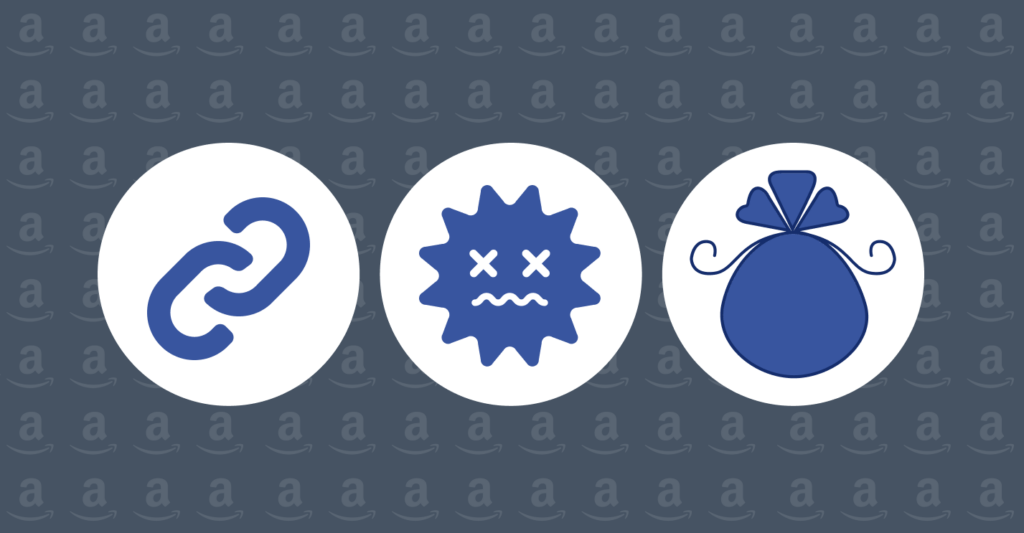
Recognizing and avoiding the traps set by fraudsters and social engineers is crucial. Here are a few tips to help you spot an Amazon scam long before it happens.
- One of the key indicators of a potential Amazon scam is the tone of the message. If it’s urging you to act urgently or instilling a sense of desperation, it’s a clear red flag. Look at the email for editing. Amazon is a reputable company with enough able employees who will counter-check the grammar and spelling of the messages they put in their emails. So, suppose you find any grammar mistakes, typos, broken language, or signs of automatic translation, know that it’s a scam.
- See if the email has any suspicious links. One of the common strategies used by Amazon scammers is that they will send you emails or messages that contain suspicious links. Most of these links are contact details and will try to mimic the official websites or emails from Amazon. Some of these links could include the name Amazon or a similar typo on their domain name. For example, you can find amatzon.net, Amazontrade.net, amszon.com, amazon.VIP.net, and others instead of Amazon.com.
- Also, if the deal that Amazon’s scammers bring you appears too good to be true, it’s probably because it is. If, for instance, you get an email telling you that you have received a voucher worth a thousand dollars, and all you need is to click on a suspicious link, then you know that fraud.
- If you get a seller telling you to pay outside the official Amazon secure system for any reason, you should doubt them.
- Don’t do it if they give you gift cards instead of money or promise great bonuses and deals from expensive mystery boxes.
Also, remember that Amazon agents will never do any of the following:
- Ask you to download or install any third-party software.
- Tell you to make any payments for customer support services.
- You must verify any personal details and provide your personal data, payment information, or account login credentials.
How to Prevent Amazon Scams: 10 Cybersecurity Tips
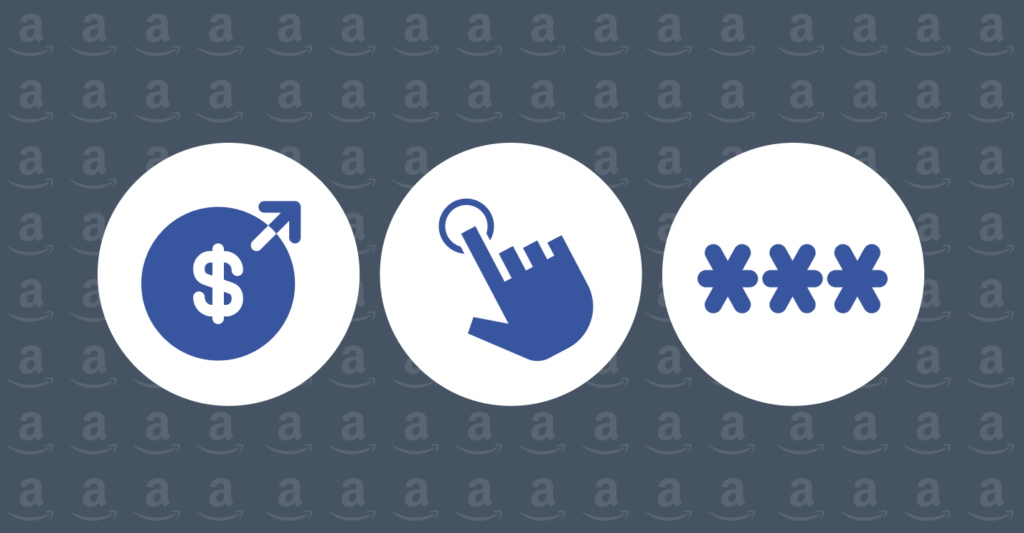
You already know how to detect and point out frauds long before they happen. But you may be wondering how to avoid the tricks and scams altogether. The tips we are aligning below will help you reduce the risk of getting caught up as prey in this jungle of Amazon scammers and predators:
- Notice the red flags and take action: Do not ignore any warning signs. If you find yourself in a suspicious situation, use your best judgment. For instance, if you receive suspicious messages from unscrupulous emails or phone numbers, raise your eyebrows and do not continue with the transaction.
- Do not send your money outside the Amazon official website: If you have decided to use Amazon as your online shopping platform, then do not use any other website that may compromise your security. Stick to Amazon’s official application always.
- Verify your transactions: Keep your guard on and avoid any surprise expenditure. Double-check your transaction details, shipping costs, fees, and any other payments before you can execute a purchase.
- Bookmark the official Amazon website: If you’re shopping on your computer, you need to bookmark the official Amazon website. You will not have to make typos or go to other websites that pretend to be Amazon.
- Never click on suspicious attachments or links: If you are reading a message from your SMS or email, approach every link or attachment carefully. Some links lead to unsafe websites that may expose your device to malware or even track your data.
- Ignore any communication from unverified sources: Reduce the risks of falling into the hands of Amazon’s commerce by ignoring all messages received from unverified emails or other sources. Suppose you must address something or have an issue with your Amazon account. In that case, you should contact the official Amazon customer support agents on the Amazon applications or official website.
- Enable the two-factor authentication system: The 2FA gives you an additional layer of protection to your Amazon account. Even if fraudsters get your passwords and other login details, they will not access your account if they do not have the 2FA code. Therefore, you must authenticate any transaction or access to your account, making it difficult for the scammers to steal from you.
- Keep your personal information safe: Do not expose your address, payment information, driving license, social security number, or any other information that could track you down. Keep your sensitive data to yourself unless you need it with trustworthy individuals and entities for official purposes.
- Change your password regularly: Some systems can predict your passwords and log information. This way, malicious people can get access to your account. So, it would help if you change your passwords regularly to ensure unauthorized users do not get access to your accounts. If you don’t know how to create strong passwords, use an effective tool like ExtremeVPN’s password generator.
- Always install antivirus software and VPN: Protect yourself from malware with antivirus software. Antivirus programs minimize the risks of downloading viruses and spyware that Amazon scammers may use to harm your device. At the same time, make sure to have a virtual private network VPN such as ExtremeVPN that will encrypt your data, give you a new IP address, and make you browse the internet as a ghost.
How to Report Amazon Scams
If you ever receive any messages, emails, or phone calls from suspicious individuals pretending to be Amazon agents, you must report them immediately. You can also file your reports through Amazon’s website.
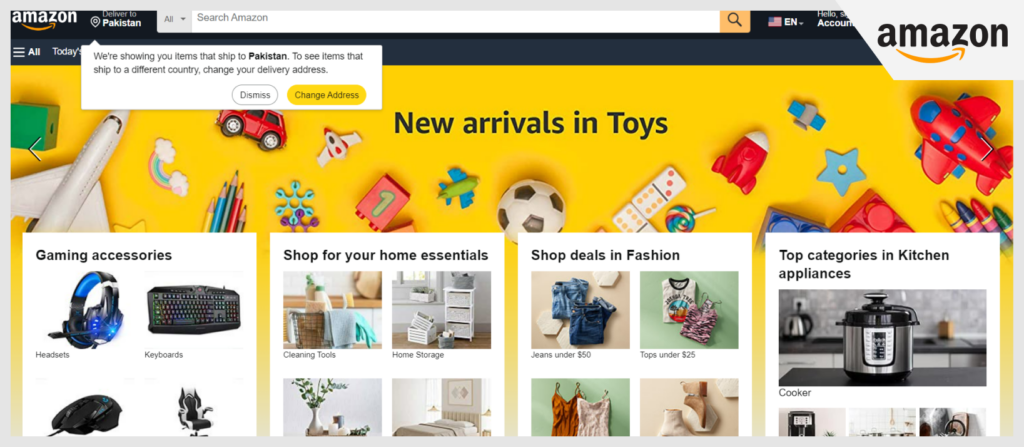
Here is how to report scams of Amazon:
- First, log in to your Amazon account on your computer or mobile application.
- Now go to the Customer Service Web Page on Amazon.com.
- Navigate to the Help page and tap on Security and Privacy.
- Now go to Report Something Suspicious.
- Choose the options you want to report describing the nature of the communication or emails you received.
- Make your formal report by providing as much information about the incidents as possible. For example, if you have a phishing problem, write down the address screenshots of communications and the sender’s name, emails, or any other relevant details.
What to Do If You Fall Victim to an Amazon Scam
If you happen to be the victim of Amazon’s scam, then there are certain urgent steps you need to take. First off, understand that the attackers are always trying to get your money, personal information, and your account login details.
Here are five things you have to do immediately if you fall prey to an Amazon scam:
- See that the scammer ticks the boxes as an Amazon cybercriminal. Accept that you have been conned, and take action.
- Stop communicating with the scammer immediately. Break all your contacts with the suspected cybercriminal as fast as possible.
- Cancel the payment you’ve made ASAP.
- Quickly contact Amazon’s customer support team about the incident via the official live chat, phone call, and email on the Amazon.com website.
- Contact law enforcement, especially if the scam is outside the Amazon platform.
What to Do If an Amazon Seller Scams You
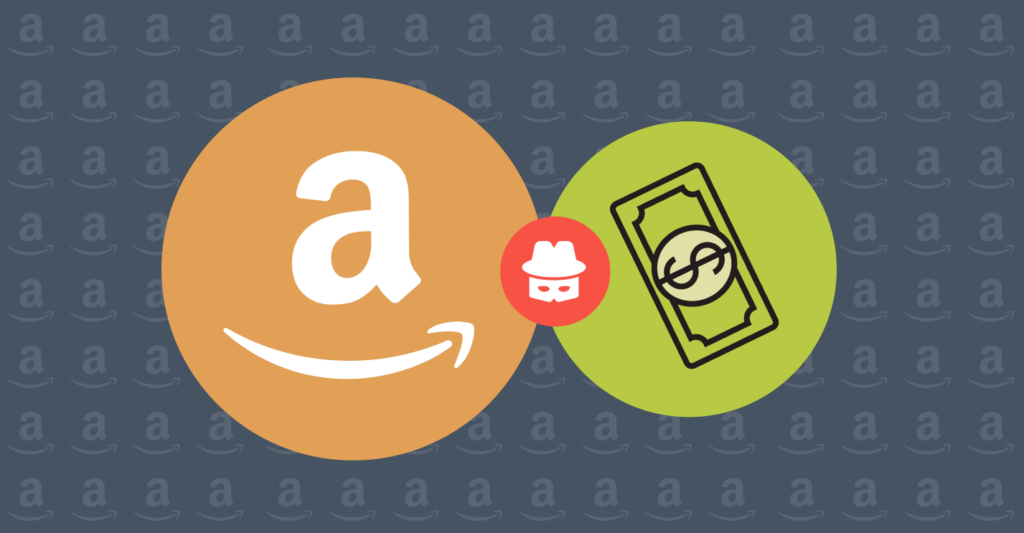
Some of these scammers are legitimate Amazon sellers with stores full of product pages that look legit. And yes, you can even verify Amazon sellers. However, they could be scammers hiding on the Amazon sellers program.
If you find out that an Amazon Seller has scammed you, then you need to contact them to solve the issue in one day. If they ignore you, you now qualify for Amazon’s A to Z guarantee claim.
Amazon has a quick way to report any suspicious activity with the seller going to their product pages. You can select the option “I have an issue with the seller” or simply “this product or content is illegal, unsafe, or suspicious” and book your ticket to report any suspicious activity.
Then follow the steps that the Amazon website system shows you. After entering your details about the issue, you can submit it. Amazon will contact the seller, and they could even ban them from the platform after refunding you.
Remember, Amazon will only protect your money when you make payments through the secure payment system.
Can Buyers Scam Sellers on Amazon?
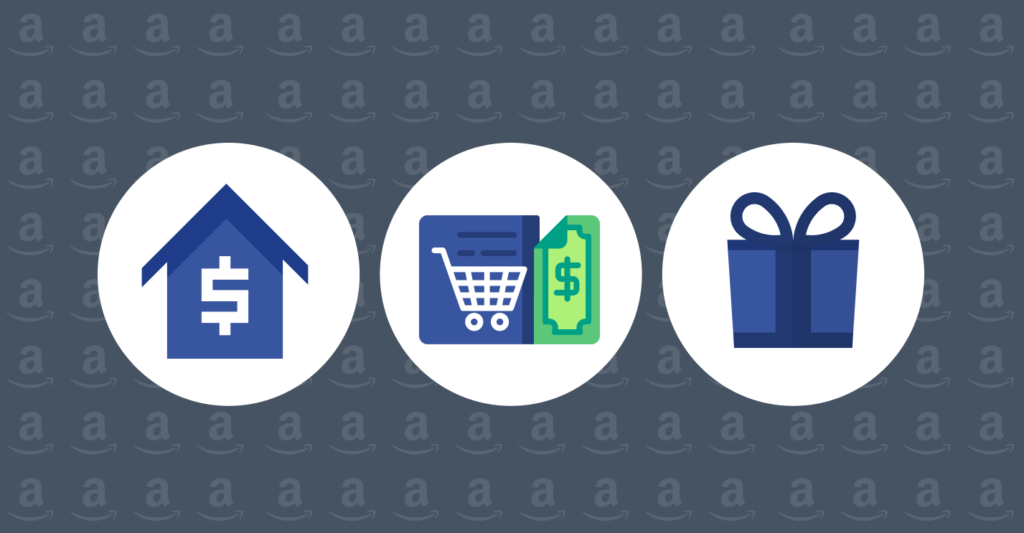
It’s a reality that Amazon sellers, like all users, are susceptible to scammers on the platform. Fraudulent users may target sellers and product pages, so it’s crucial to be vigilant.
Here are some common tricks scammers use on Amazon sellers:
- Some buyers exploit sellers by using the lenient return policies that Amazon offers. For instance, they will buy products on Amazon, use them, and then return them later for a full refund. Some of these products are damaged by the time of the return.
- Other buyers are notorious for making false refund requests. They claim they never received the product they ordered or that it is damaged. Then, they will launch a refund claim.
- Some scammers will buy your product on Amazon and then claim it is damaged or any other outrageous claim. Then, they will file for a refund but return a counterfeit item, not the original product you shipped to their address.
- Some Amazon buyers will order your original product from your Amazon store and then resell it using your picture on a different Amazon store. The only difference is that they will sell a product that looks exactly like yours and has your brand name at a lower price and lower quality. Because they are selling counterfeit products that look exactly like yours, they will make your customers stop trusting you when they receive low-quality products from your brand.
- Some Amazon buyers will also use stolen credit cards to buy Amazon gift cards and then redeem them by purchasing products from your store. Then, they resell the items for cash, leaving you with a chargeback and losing both the product and sales revenue.
When reporting Amazon buyer fraud, providing as much detailed information as possible is crucial. This includes the profile link, order details, and any screenshots of the fraudulent activity. By doing so, you’re taking a proactive step in protecting yourself and the Amazon community.
What to Do When Someone Hacks Your Amazon Account
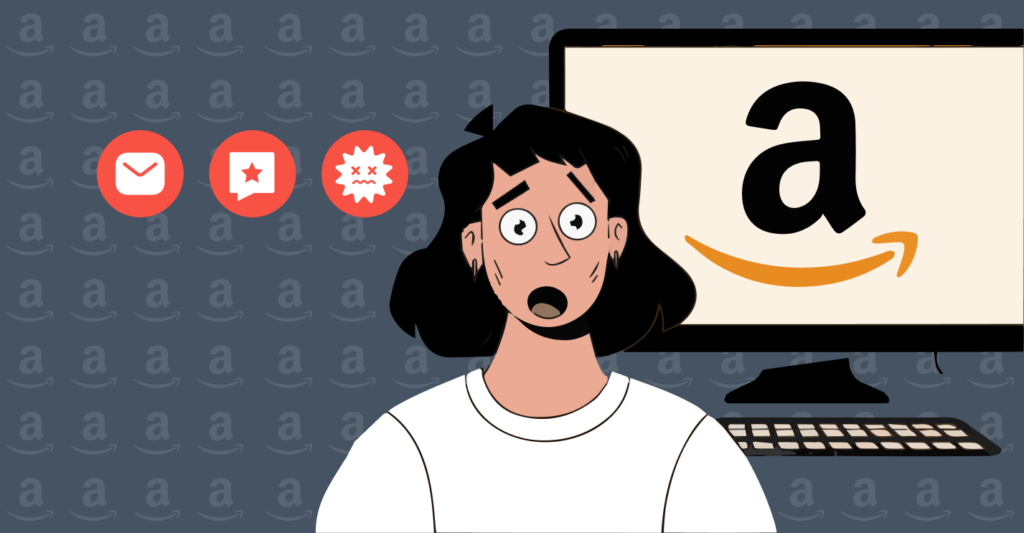
If you even think that someone has your Amazon credentials, then this is what to do:
- Start by logging on to your Amazon account and immediately hitting the change my password option. If you try to change your password and then realize it’s impossible, the hackers already have your account. That’s when you need to contact Amazon. But if you can log onto your Amazon account, you need to change your password immediately. Also, check your settings on the profile to see if any changes are being made to your account.
- No, go to your orders page and check if the hackers buy anything from the Amazon store. See the archived orders as well.
- You can also see this information straight from your bank account balance. If you find any unusual changes in your bank account, they could result from hacking.
- Contact Amazon customer support and inform them that your account has been breached. Report the scammer and request that any unauthorized transactions be canceled. Amazon’s customer support team will guide you through the process of securing your account and reversing any fraudulent transactions.
- It’s also crucial to extend the report to your bank, credit card issuer, or any other payment provider that you use on Amazon. This will help prevent further unauthorized transactions and protect your financial information. Be vigilant and report any suspicious transactions immediately.
Shop More Securely on Amazon with ExtremeVPN

By now, you know you are risking your personal information and money when shopping online. Fortunately, you also know how to spot potential scammers on the internet and deal with them. But it would help if you have not stopped there yet.
You should be ready to use software that keeps you safe when browsing or buying your desired products on Amazon.
ExtremeVPN boosts your online security by adding an extra layer of protection. It hides your digital identity so that you can stay safe from malware, hackers, and viruses that could compromise your personal information or web activity. Our VPN will encrypt your traffic to ensure nobody can intercept and read your personal information or web activity.